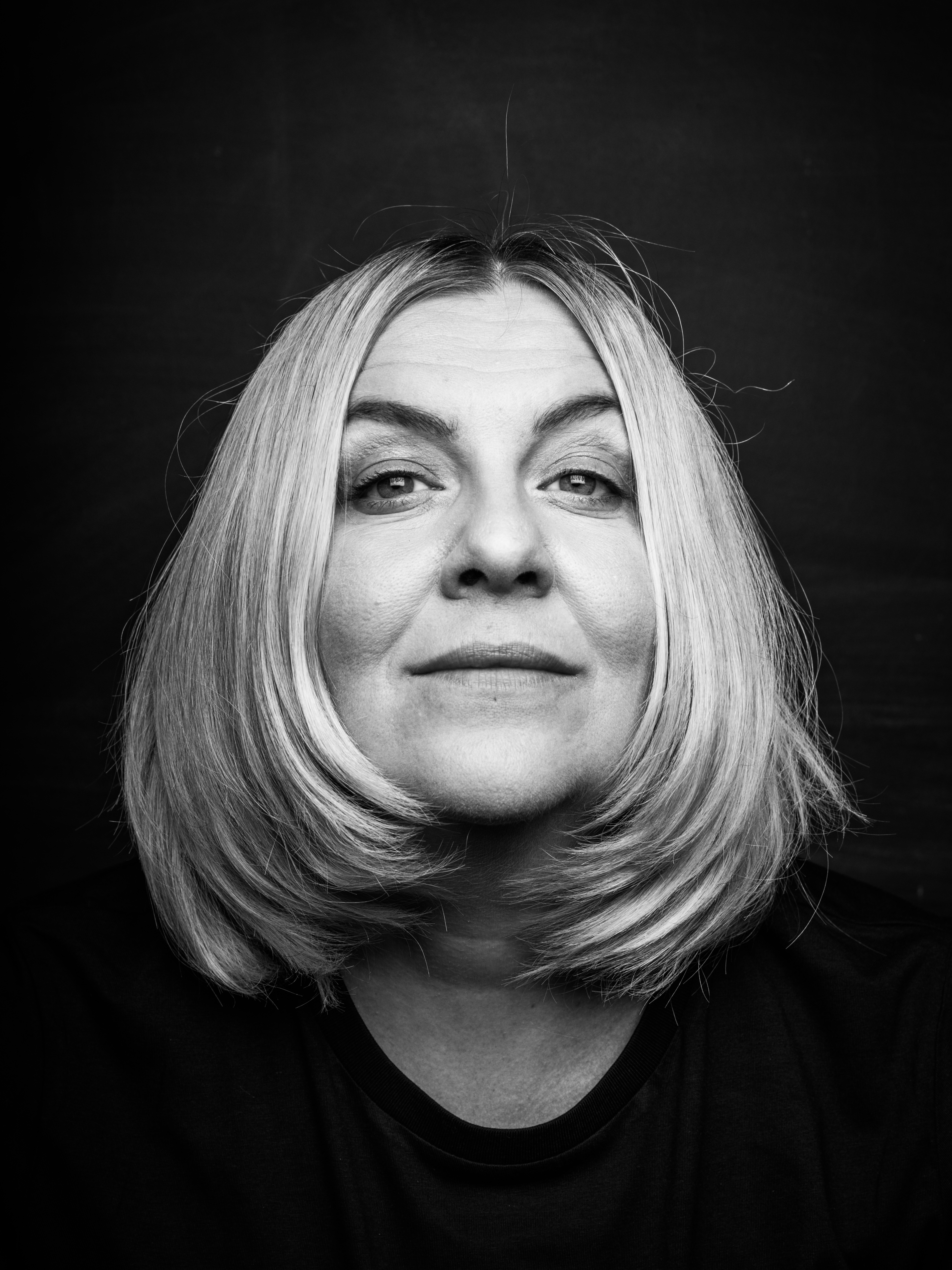(THIS ARTICLE IS MACHINE TRANSLATED by Google from Norwegian)
Kate Pendry came to Norway in 1995 and quickly became a significant voice through provocative performance and biting contemporary drama. Prior to her refreshing intake, the free theater arena was most of the people of particular interest. Pendry's controversial theme choices and political moves made it boil down to the media's front pages. Reluctant Norwegians were furious with hate speech, social debate and great public response. Pendry's artwork struck with great force.
British Pendry commits one of its many characters, Dead Diana. Her performance praises popular culture's tribute and iconification of the people's princess Di. Malignant portraiture, but just as deeply a deep warmth for the woman trapped in the clutches of the media. Little did Kate know that this was a warning of her own destiny and breakdown.
 Tabloid aggression. Journalist and cartoonist Marie Leland Ekeli, known for the book Good Ladies (2010), embarks on something as daring as capturing Kate Pendry's life and working with her pen. For help, she receives more than 1500 press articles from Pendry's personal archive, private photographs, compiled dramatic texts and medical records. Ekeli draws well. She alternately plays between comic book storytelling, Rolling Stones interview and more.
Tabloid aggression. Journalist and cartoonist Marie Leland Ekeli, known for the book Good Ladies (2010), embarks on something as daring as capturing Kate Pendry's life and working with her pen. For help, she receives more than 1500 press articles from Pendry's personal archive, private photographs, compiled dramatic texts and medical records. Ekeli draws well. She alternately plays between comic book storytelling, Rolling Stones interview and more.
But she also balances on the delicate egg that occurs when Pendry becomes seriously ill. What consideration should be given to art and man? Here, the biography manages to create a story about something more. This gorgeous book in coffetable format gleams seductively. What lures is within the perms. A generous conversation lasting several years forms Demonologys foundation. Not least, this wonderfully complex and insightful biography provides a necessary counterbalance to the tabloid aggression that was close to crushing the artist completely.
The pendulous look. Pendry's stand is characterized by something that seems exotic among today's Norwegian cultural expressions. The scenic and dramatic utterances include a distinct class consciousness, a self-kicking gender consciousness and an insatiable demand that the arts enable a politically redeeming experience. Pendry is not limited. Not in the use of material from her own life, nor if she hits too hard. She constantly tests the limits of what contemporary drama or performance can be about – and sometimes things go wrong. She has experienced the need for police protection to carry out performances. But she has also lifted the discourse on the role of women and women's body to become a fire torch, long before everyone else. She dares to debate the contempt for her own body, and allows herself, both with this and other, to become a feminist broadcaster of the symptoms of the ills of our time. Pendry does not shy away from investigating the discomfort. IN Peep show Marilyn she attaches fishing hooks to her own skin and lets the blood and performance shine through to the notion of last century's greatest female sex symbol.
"Bassline in my childhood plays violence, hatred, evil."
Wicked child – Thatcher milk snatcher. In the performance Tales From A Wicked Child she examines the myth of the innocent child versus absolute evil. Themes and use of photos of known victims and abusers aroused strong reactions. The biography here gives us a poignant close look at Pendry's living nightmare from the upbringing of London's Notting Hill. Here are painterly lush environmental descriptions with many pop-cultural references. Cruelty, neglect and intoxication mean I have to take breaks. An intense tenderness emerges, but also an anger on behalf of the child Kate. Her survival strategies and few good helpers ease the reading – for example, the head teacher who shields her from the other children's atrocities. At lunch, little Kate will be served classics such as Shakespeare, thus avoiding the exposure of the neglected girl's dirty, strange clothes. Kate finds literature as a long-awaited lifebuoy.
But then Thatcher came and stole the milk from the kids. Pendry experienced the raw materiality of the body as the mines closed down and men lost both the dignity and ability to feed the family. As one of several Brits in Norway, Pendry compares today's political culture cuts with the Thatcher government's (social) destruction.
Amidst the depiction of her neglect, political man Kate Pendry emerges. Legally, vulnerable extradition, but also with hope. Despite her mother's brutality and lack of care, she derives the value from this unconventional woman – the nurse specializing in rehabilitation preferred to surround herself with drug addicts and allowed Kate to grow up at risk of abuse. A horror cabinet of dark demons, intoxication and childhood violence became an inexhaustible source of exceptionally hit characters. Dandelion child Kate also had a drama teacher who introduced her to the tools that make it unbearable.
“As a nine-year-old, I was chosen to participate in a project at the Royal Court Theater about Baader Meinhof! All the children were given the task of trying to understand the background to the terrorist attacks and staging authentic situations. ”
redemption. The book describes Pendry's redemption as a politically powerful playwright after settling in Norway. Other anecdotes, like the one above, point back to early years in England. I keep on scrolling back and forth in the book after first reading. New moments provide new connections. The excerpts from Kate's dramatic texts provide the familiarity she has entrusted to me as a reader. The biography shows a trust between two creative women. Much more could have been said – but the book itself does.


